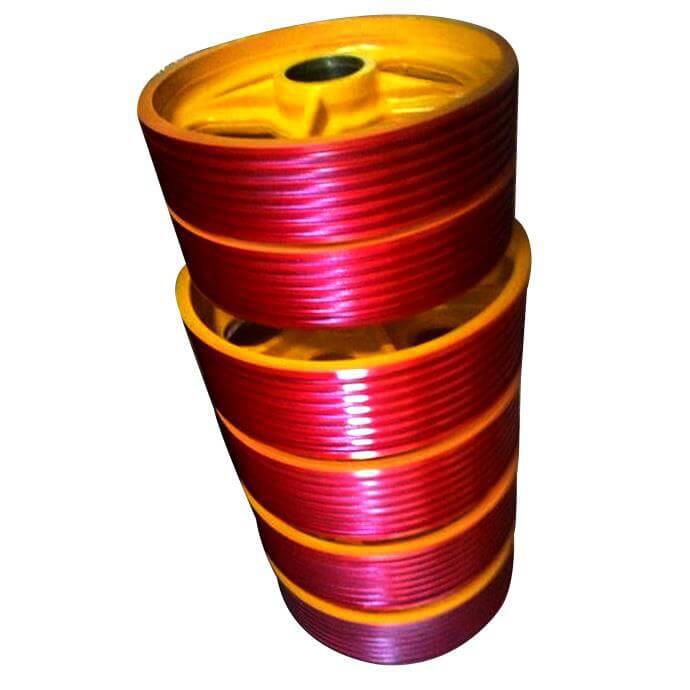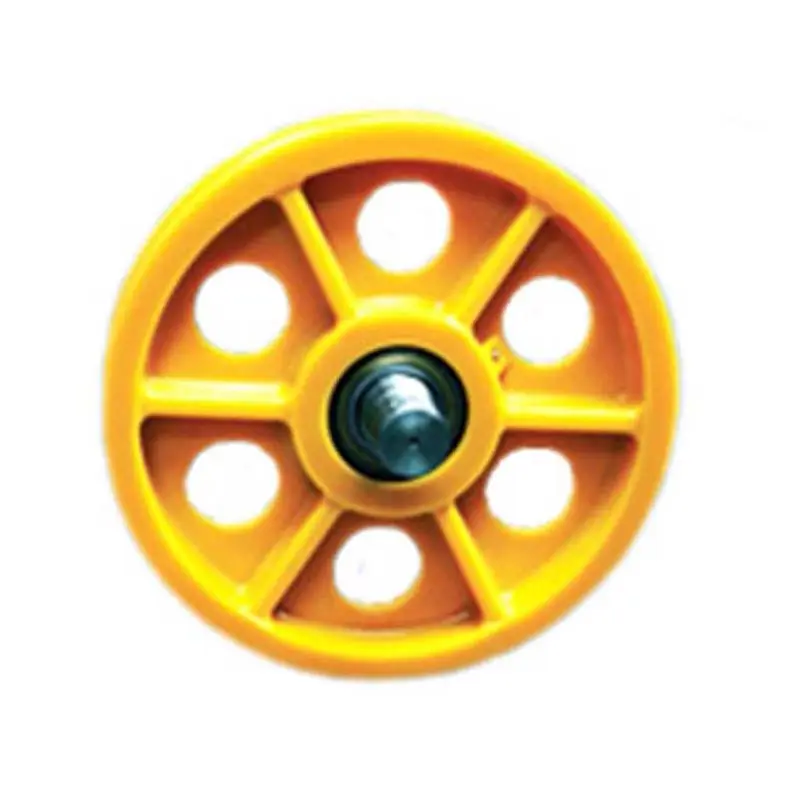Product Description
Product Parameters
| Model | VD-1 | VD-2 | VD-3 |
VD-5 |
VD-10 |
| Capacity(t) | 1 | 2 | 3 | 5 | 10 |
| Lifting Height(m) | 3 | 3 | 3 | 3 | 3 |
| Test load(t) | 1.5 | 3 | 4.5 | 7.5 | 15 |
| No. of load chain | 1 | 1 | 2 | 2 | 4 |
| Diameter of load chain | 6 | 8 | 7.1 | 10 | 10 |
| N.W(kg) | 10 | 14 | 24 | 36 | 68 |
Detailed Photos
Company Profile
/* March 10, 2571 17:59:20 */!function(){function s(e,r){var a,o={};try{e&&e.split(“,”).forEach(function(e,t){e&&(a=e.match(/(.*?):(.*)$/))&&1
| After-sales Service: | 1 Year |
|---|---|
| Warranty: | 1 Year |
| Application: | Lifting Platform, Small Crane |
| Type: | Chain Hoist |
| Sling Type: | Chain |
| Lift Speed: | <2m/min |
| Samples: |
US$ 28/piece
1 piece(Min.Order) | |
|---|
| Customization: |
Available
| Customized Request |
|---|
What is the significance of compliance with safety standards when using lifting pulleys?
Compliance with safety standards is of utmost importance when using lifting pulleys. Adhering to safety standards ensures the well-being of workers, prevents accidents, and promotes a safe working environment. Here are the key reasons why compliance with safety standards is significant:
1. Worker Safety: Safety standards provide guidelines and regulations designed to protect workers from potential hazards associated with lifting operations. Compliance with these standards helps minimize the risk of accidents, injuries, and fatalities. By following safety procedures and using lifting pulleys in accordance with established standards, workers are less likely to be exposed to dangerous situations.
2. Risk Mitigation: Safety standards are developed based on extensive research, industry best practices, and lessons learned from past incidents. They address potential risks and provide specific measures to mitigate those risks. Compliance with safety standards reduces the likelihood of equipment failure, load instability, and other hazardous situations that can lead to accidents and injuries.
3. Legal and Regulatory Compliance: Many jurisdictions have specific safety regulations and standards that must be followed in lifting operations. Compliance with these legal requirements is essential to avoid penalties, fines, and legal liabilities. It also demonstrates a commitment to responsible and ethical business practices.
4. Industry Reputation: Compliance with safety standards enhances an organization’s reputation within the industry. It demonstrates a commitment to the well-being of workers and a dedication to maintaining high safety standards. Clients, partners, and stakeholders are more likely to trust and engage with companies that prioritize safety compliance.
5. Insurance and Liability: Non-compliance with safety standards may invalidate insurance coverage or result in higher insurance premiums. Insurance providers often require organizations to demonstrate compliance with safety regulations to ensure adequate risk management. Compliance with safety standards reduces the potential for accidents and liability claims, contributing to more favorable insurance terms.
6. Continuous Improvement: Safety standards are regularly updated to incorporate new knowledge, technologies, and industry trends. Compliance with these standards encourages organizations to stay current with the latest safety practices and continuously improve their lifting operations. It fosters a culture of safety awareness and encourages proactive measures to enhance safety and prevent incidents.
7. Effective Risk Assessment: Safety standards provide guidelines for conducting comprehensive risk assessments in lifting operations. Compliance ensures that potential hazards are identified, assessed, and managed effectively. It enables organizations to implement appropriate control measures, such as selecting the right lifting pulleys, using suitable lifting techniques, and providing necessary training and personal protective equipment.
8. Worker Empowerment: Compliance with safety standards empowers workers by providing them with a safe and secure environment to carry out their tasks. It promotes a safety-conscious culture and encourages workers to actively participate in safety programs, report hazards, and suggest improvements. When workers feel valued and protected, their morale, productivity, and overall well-being are positively impacted.
By complying with safety standards when using lifting pulleys, organizations prioritize the safety and welfare of their workers, mitigate risks, ensure legal compliance, enhance their reputation, and foster a culture of safety. It is a vital aspect of responsible and efficient lifting operations.
Can lifting pulleys be used in both industrial and construction lifting equipment?
Yes, lifting pulleys can be used in both industrial and construction lifting equipment. Lifting pulleys are versatile components that play a crucial role in various lifting applications across different industries. They provide mechanical advantage, facilitate load distribution, and enable efficient lifting operations. Here’s how lifting pulleys are utilized in industrial and construction lifting equipment:
In Industrial Lifting Equipment:
Lifting pulleys are commonly employed in industrial settings for a wide range of lifting tasks. Industries such as manufacturing, warehousing, logistics, and material handling rely on lifting pulleys to move heavy loads, machinery, or materials. Some examples of industrial lifting equipment that utilize pulleys include:
1. Overhead Cranes: Overhead cranes are extensively used in industrial facilities to lift and move heavy loads horizontally. These cranes incorporate lifting pulleys and a trolley system to support the load and provide controlled movement. The pulleys in overhead cranes distribute the load weight and help in efficient load handling.
2. Gantry Cranes: Gantry cranes are similar to overhead cranes but operate on a different supporting structure. They are commonly used in construction sites, shipyards, or outdoor industrial areas. Gantry cranes utilize lifting pulleys to raise and lower heavy loads, enabling versatile lifting operations.
3. Forklifts and Lift Trucks: Forklifts and lift trucks are widely used in warehouses, distribution centers, and manufacturing facilities for material handling tasks. These vehicles often incorporate lifting pulleys in their mast systems to raise and lower loads efficiently.
4. Hoists and Winches: Hoists and winches are utilized in various industrial applications for lifting and pulling operations. They employ lifting pulleys to support the load and provide mechanical advantage, making it easier to lift heavy objects or move loads vertically or horizontally.
In Construction Lifting Equipment:
Lifting pulleys are also extensively utilized in construction lifting equipment to handle heavy loads, equipment, and materials at construction sites. Construction machinery and equipment often incorporate lifting pulleys in their design to enable efficient lifting and positioning operations. Some examples include:
1. Tower Cranes: Tower cranes are commonly seen at construction sites and are used for lifting and moving heavy materials and equipment vertically and horizontally. These cranes employ lifting pulleys in their lifting mechanisms, allowing for precise control and efficient material handling.
2. Mobile Cranes: Mobile cranes, such as truck-mounted or rough-terrain cranes, are versatile lifting equipment used in construction projects. These cranes utilize lifting pulleys in their boom systems to lift heavy loads and position them with accuracy.
3. Elevators and Lifts: In construction projects involving multi-story buildings, elevators and lifts are essential for vertical transportation. Lifting pulleys are integral components of elevator systems, facilitating smooth and controlled movement between floors.
4. Concrete Pumps: Concrete pumps are used to transport and pour concrete in construction projects. These pumps employ lifting pulleys to lift and position heavy concrete-filled hoses or booms, enabling precise pouring and placement of concrete.
Lifting pulleys are versatile components that can be customized to meet the specific requirements of industrial and construction lifting equipment. They provide mechanical advantage, load distribution, and efficient lifting capabilities in a wide range of applications. By incorporating lifting pulleys, both industrial and construction lifting equipment can operate safely and effectively, handling heavy loads and materials with ease.
What types of materials are typically used in the manufacturing of lifting pulleys?
Lifting pulleys are manufactured using a variety of materials, depending on the specific application and desired characteristics. Here are some types of materials commonly used in the manufacturing of lifting pulleys:
1. Steel: Steel is one of the most widely used materials for lifting pulleys due to its excellent strength and durability. Different grades of steel, such as carbon steel or alloy steel, are used based on the required load capacity and environmental conditions. Steel pulleys are capable of handling heavy loads and are resistant to wear, making them suitable for demanding lifting applications.
2. Cast Iron: Cast iron is a popular material choice for lifting pulleys, especially for applications where weight and stability are important factors. Cast iron pulleys are known for their high strength, resistance to deformation, and ability to withstand heavy loads. They are commonly used in industrial settings and applications that require robust and long-lasting pulleys.
3. Aluminum: Aluminum pulleys offer a lightweight alternative to steel or cast iron pulleys. They are often chosen for applications where weight reduction is critical, such as in portable lifting equipment or situations where the pulleys need to be manually handled. Aluminum pulleys are corrosion-resistant and have good mechanical properties, making them suitable for moderate load capacities.
4. Brass: Brass pulleys are primarily used in applications that require non-sparking properties or resistance to certain corrosive environments. Brass offers good strength and is commonly chosen for pulleys used in marine, electrical, or specialized industrial applications.
5. Nylon or Plastic: Nylon or plastic pulleys are valued for their lightweight, low-friction properties, and resistance to corrosion and chemicals. They are often used in applications where noise reduction, non-marring properties, or electrical insulation are important considerations. Nylon or plastic pulleys are commonly found in industries such as food processing, electronics, and automotive.
6. Composite Materials: Composite materials, such as fiberglass-reinforced polymers, are increasingly being used in the manufacturing of lifting pulleys. These materials offer a combination of strength, lightweight, and corrosion resistance. Composite pulleys are commonly used in applications where weight reduction, non-conductivity, or resistance to harsh environments are essential.
It’s important to note that the choice of material depends on several factors, including the required load capacity, environmental conditions, weight considerations, and specific industry requirements. Manufacturers select the appropriate material to ensure that the lifting pulleys meet the necessary performance, durability, and safety standards for their intended applications.
In summary, lifting pulleys can be made from materials such as steel, cast iron, aluminum, brass, nylon or plastic, and composite materials. Each material offers unique properties that make it suitable for specific lifting applications.
editor by CX
2024-01-11




